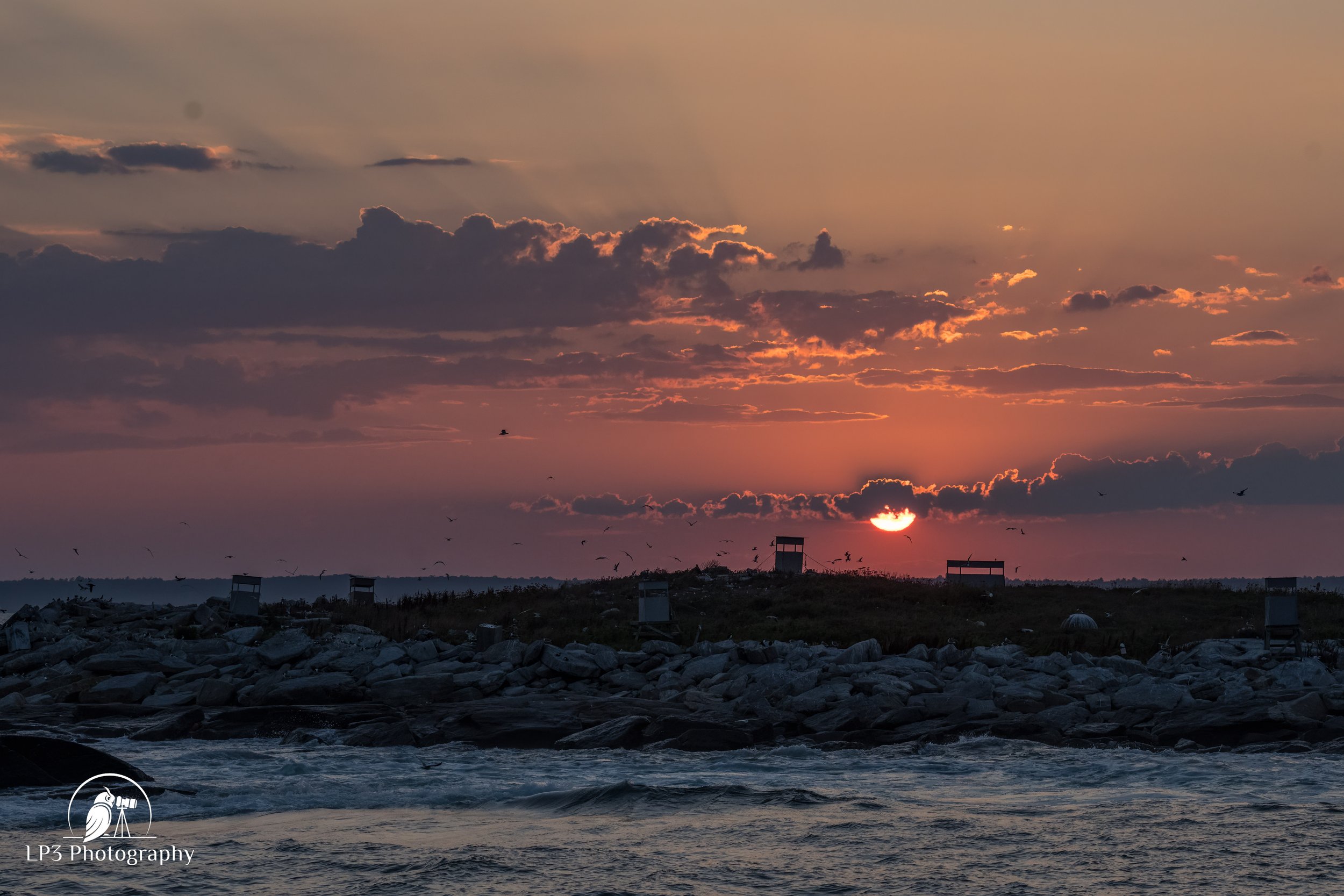by Laurie Pocher
On Friday, July 22th some of our young birders and their families embarked on the Maine Audubon Sunset Puffin Cruise into Muscongus Bay to Eastern Egg Rock, where hundreds of Atlantic Puffins, Common Terns, Laughing Gulls and Black Guillemots nest every summer.
In 1973, Project Puffin endeavored to re-introduce nesting Puffins to Eastern Egg Rock. The methods used were so successful that they’ve since been adopted in many other locations worldwide to help endangered and threatened seabirds. As of last count, Eastern Egg Rock is home to over 200 pairs of Atlantic Puffins.
Doug Hitchcox from Maine Audubon provided a running narrative of the history of Eastern Egg Rock and Project Puffin, and pointed out Common Terns, Laughing Gulls, Black Guillemots and Roseate Terns as they flew by. After about a 30min trip, we approached the island and saw our first Atlantic Puffins bobbing in the waves.
We don’t know yet how many pufflings will ultimately fledge this summer, but the sheer numbers of adults we saw flying back towards the burrows with fish in their beaks is a good sign that they’re having a successful nesting season. Warming waters over the last few years have impacted the food supply, in some cases resulting in a nest failure rate of almost 90%. We’re hopeful that this season will have a significantly higher success rate.
While the Puffins were undoubtedly the star of the show, we were also treated to a pretty spectacular sunset as we left Eastern Egg Rock. We made a short detour to see Franklin Light (the 3rd oldest lighthouse in Maine) and a large group harbor seals hauled out some rocks, before heading back to New Harbor.
Special thanks to Doug Hitchcox and Maine Audubon for sponsoring this trip for the MYBC and coordinators.
Click here to learn more about Project Puffin and learn more about how Puffins were re-introduced to Eastern Egg Rock.
We’ll be taking the month of August off (after two wonderful July trips!). Keep your eye out for our September trip announcement coming soon! Happy Birding.

















